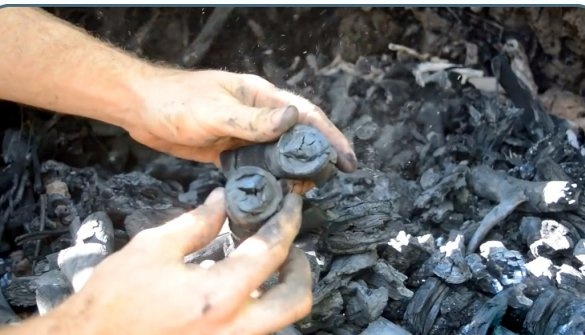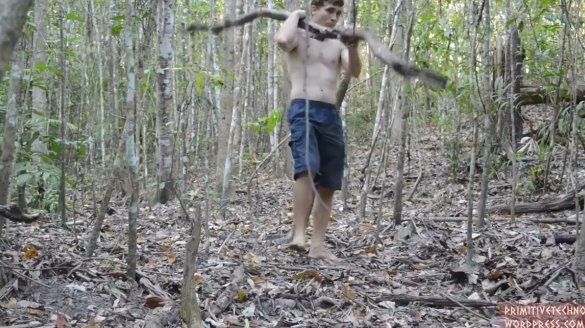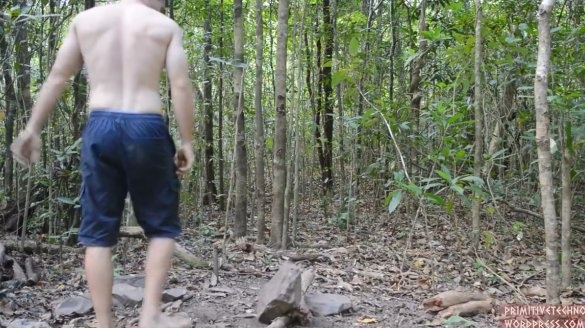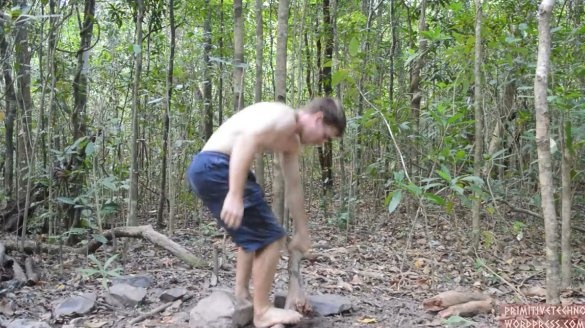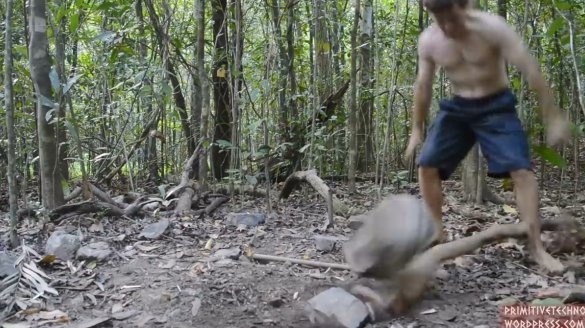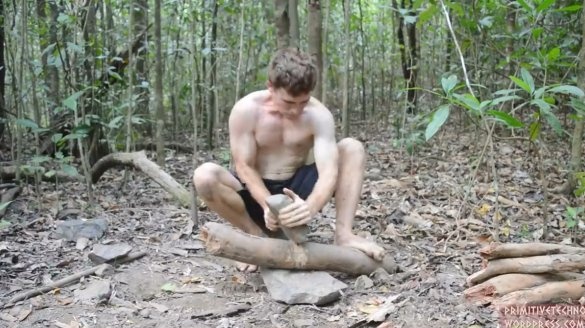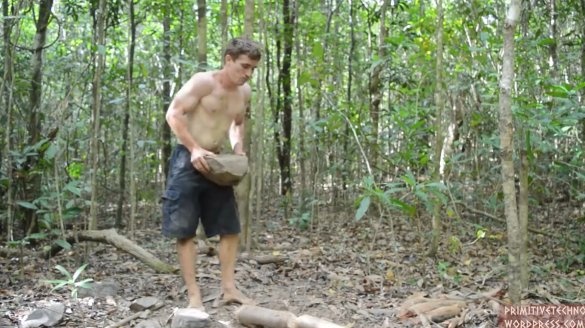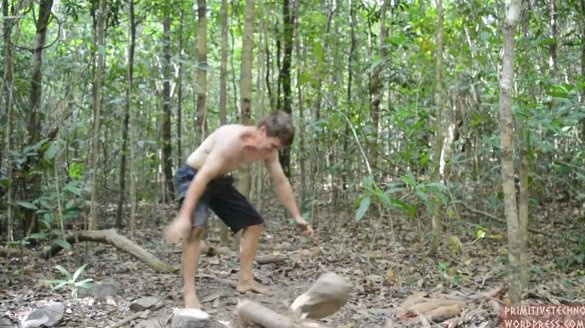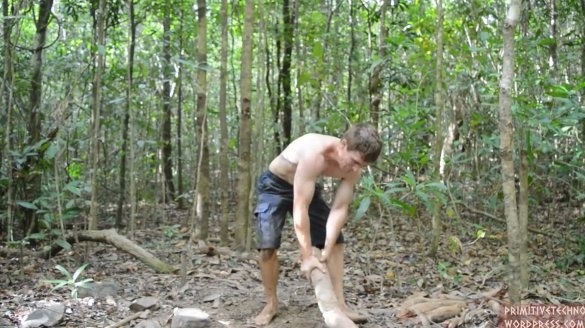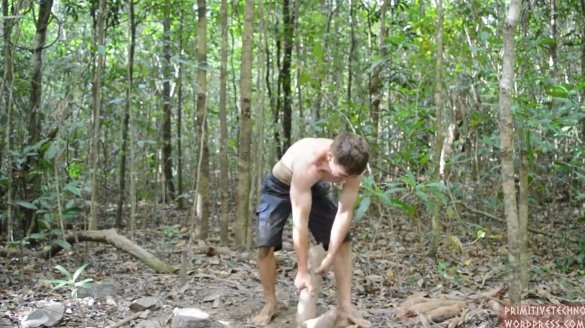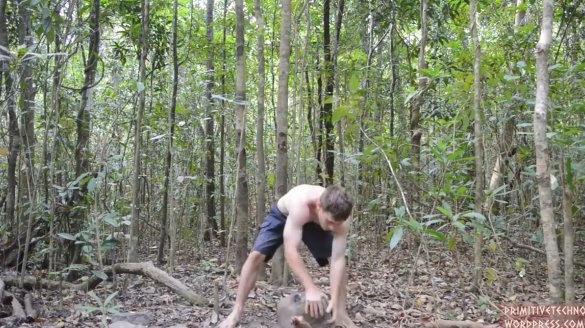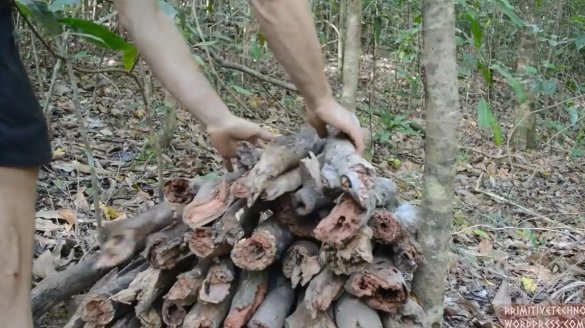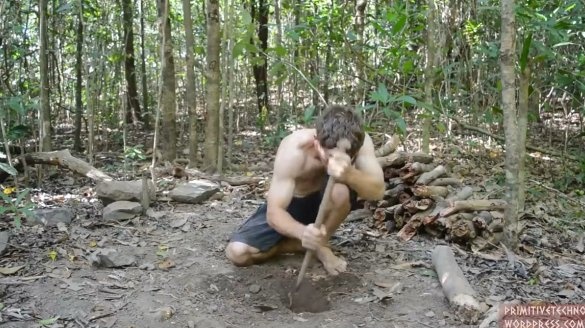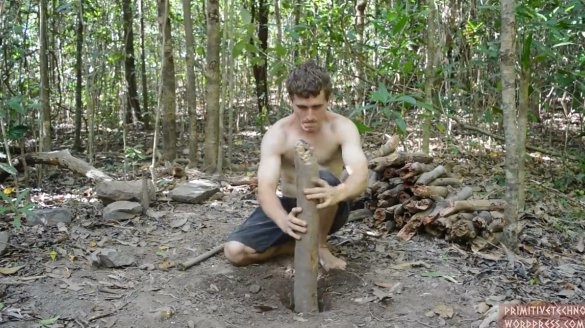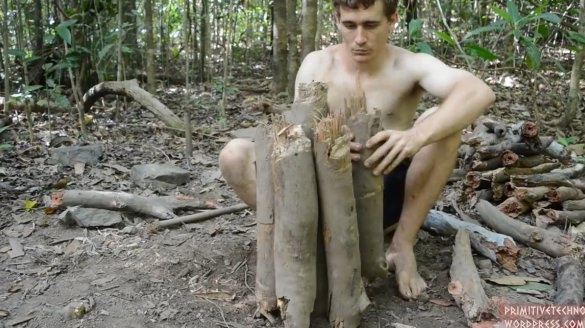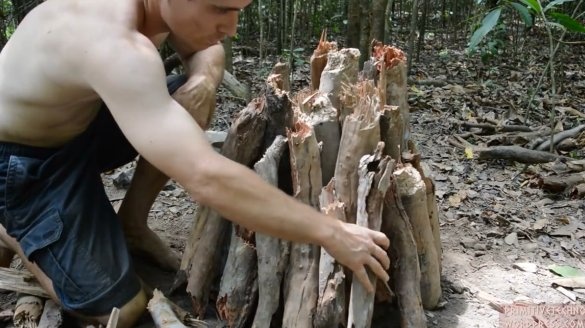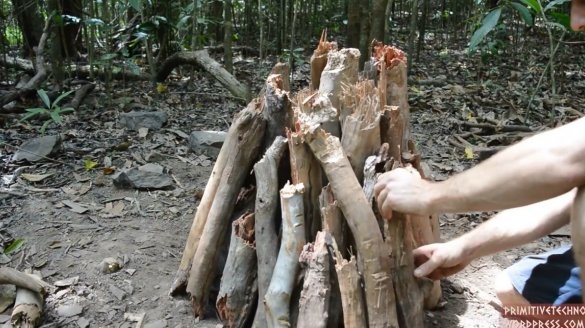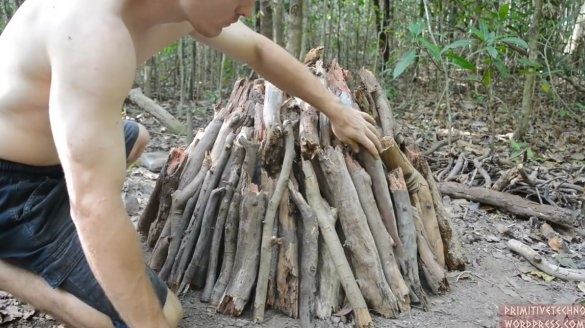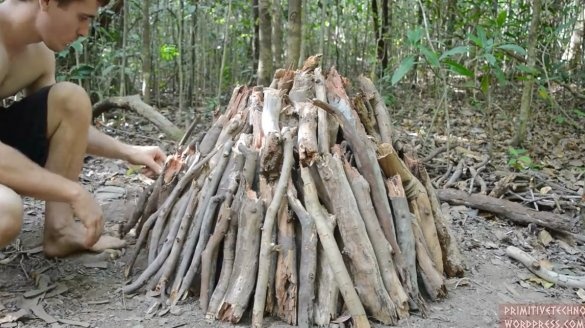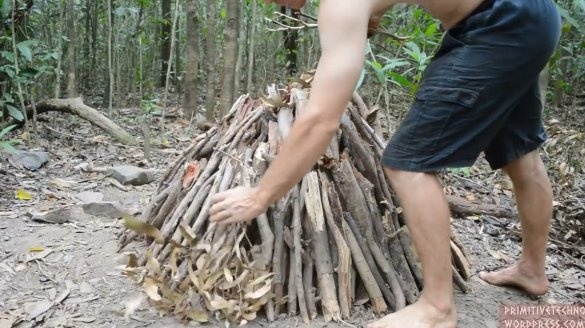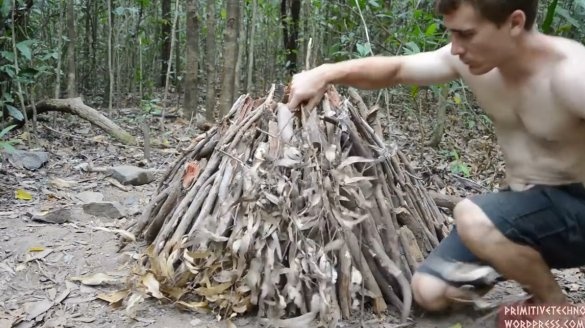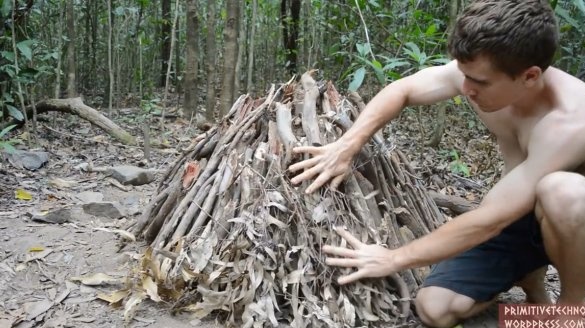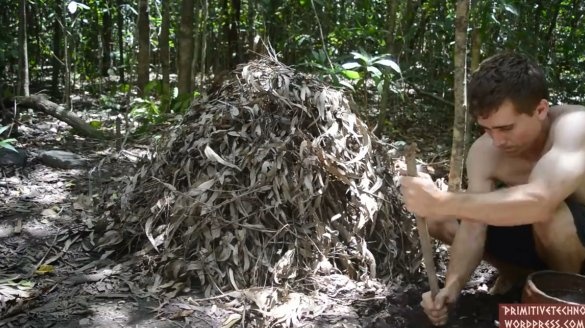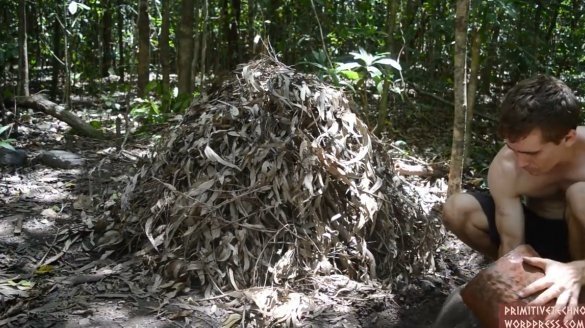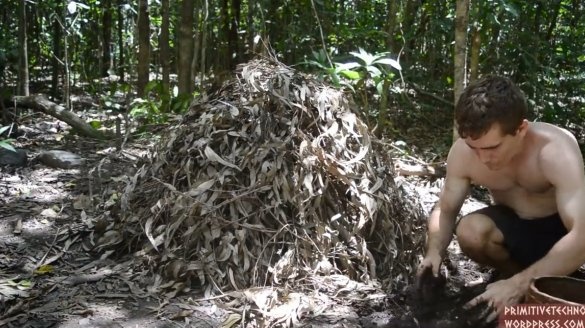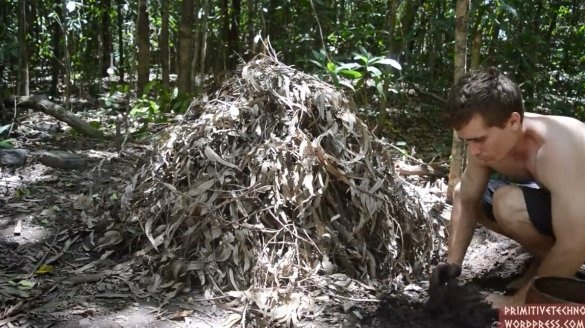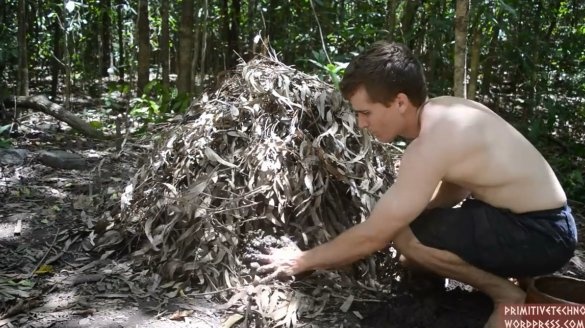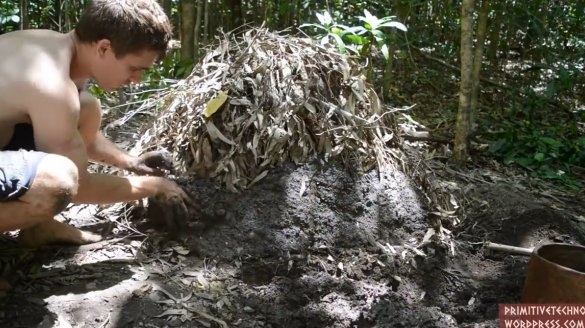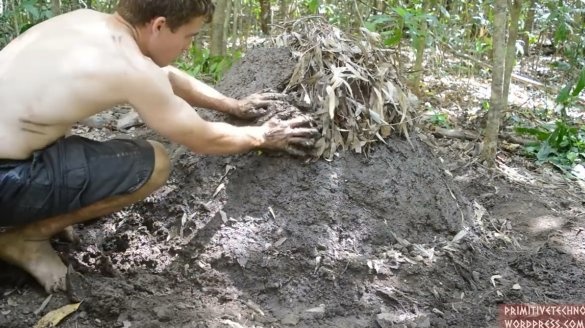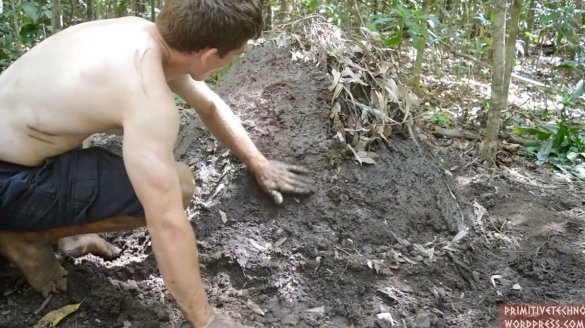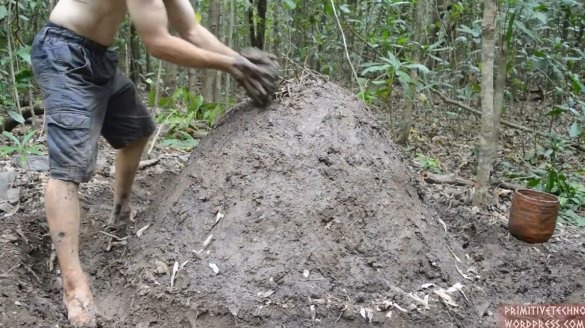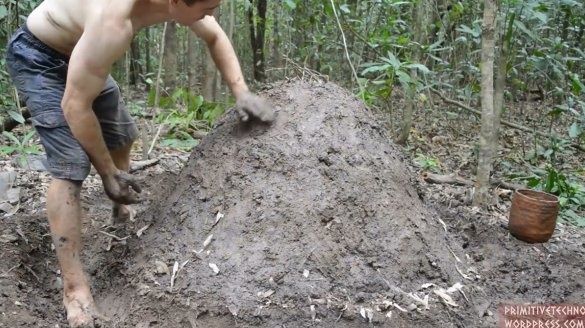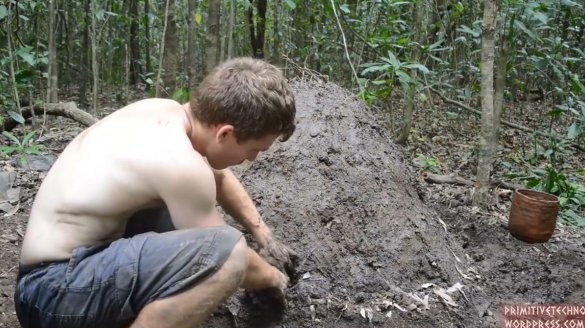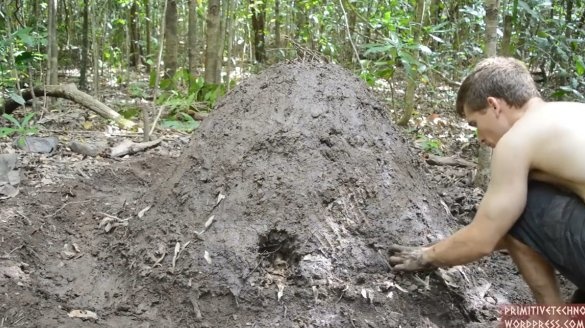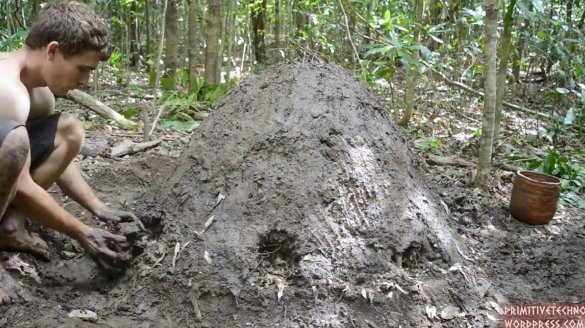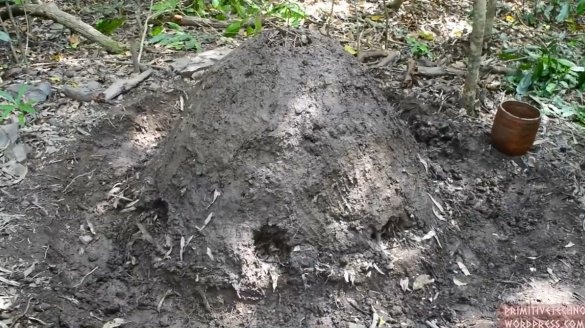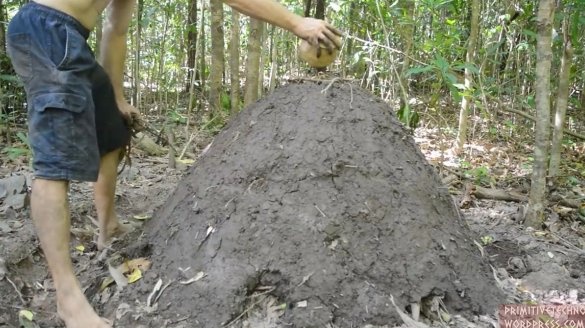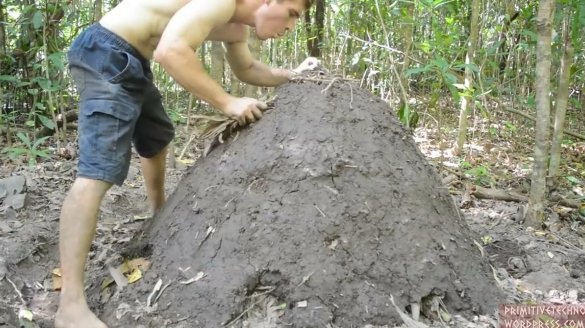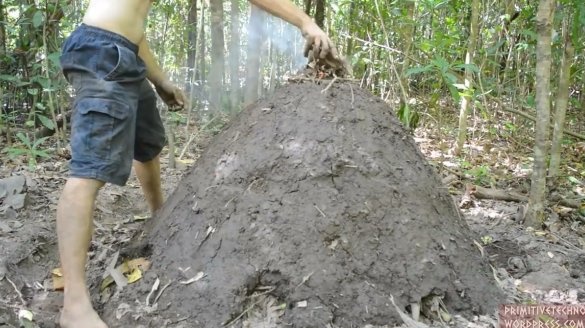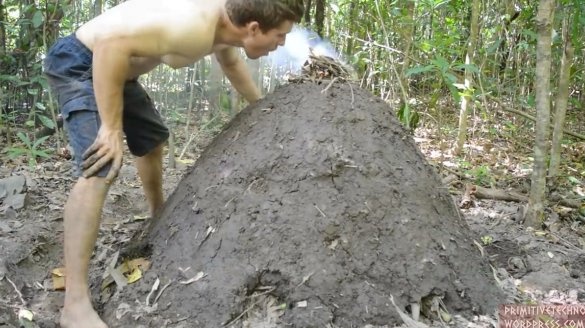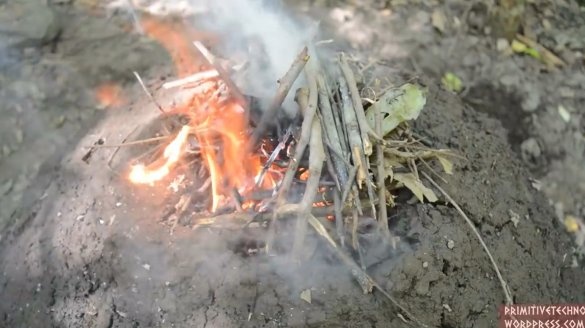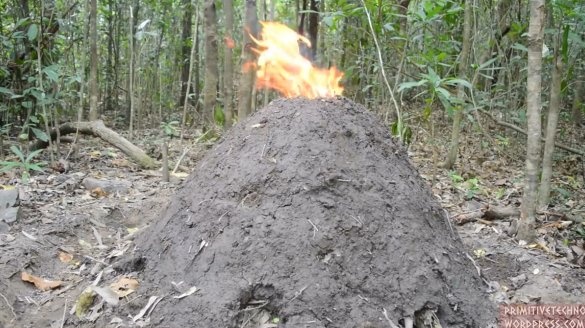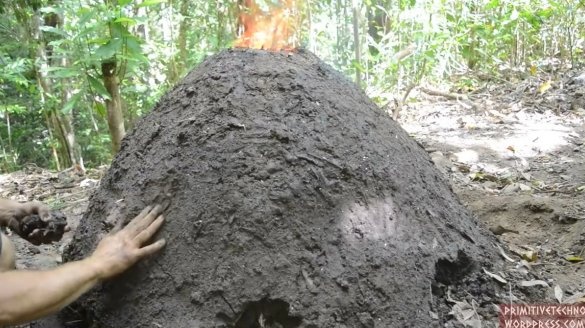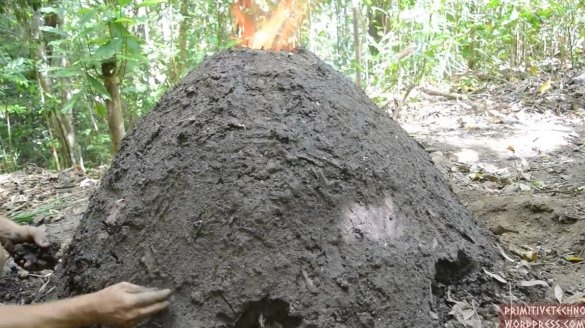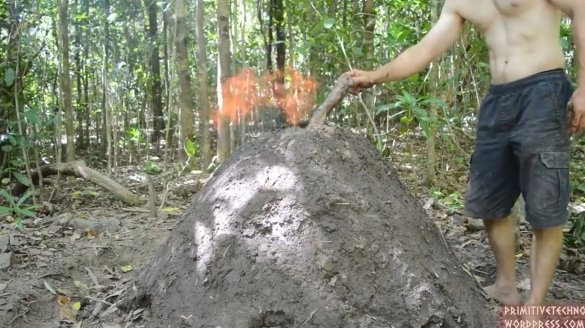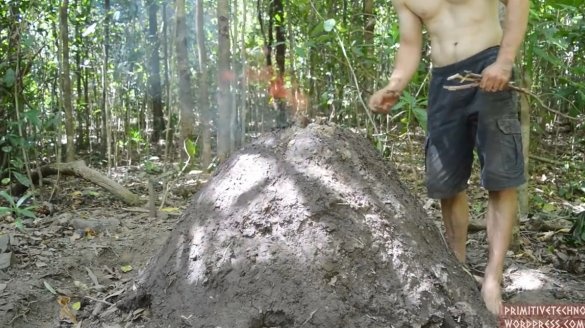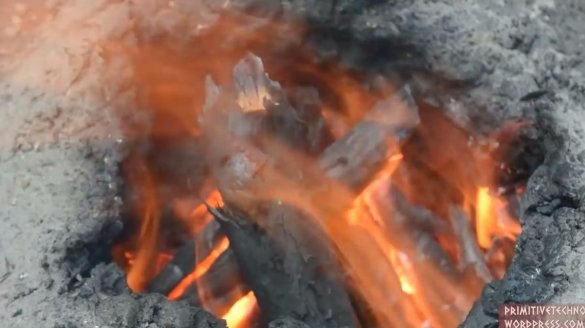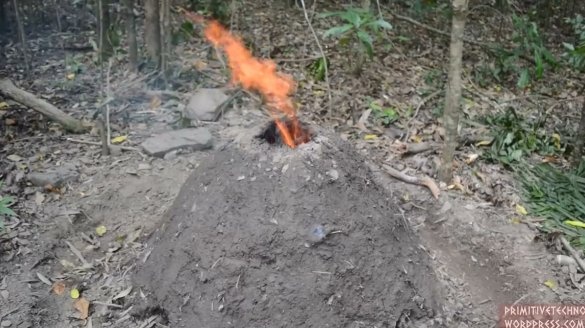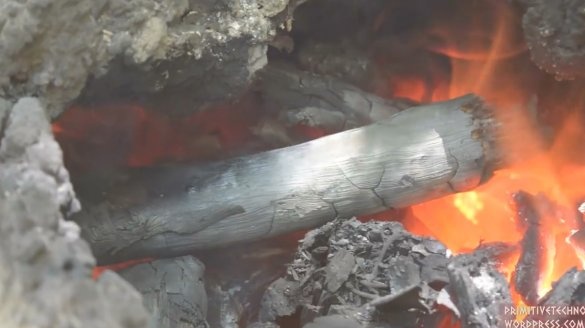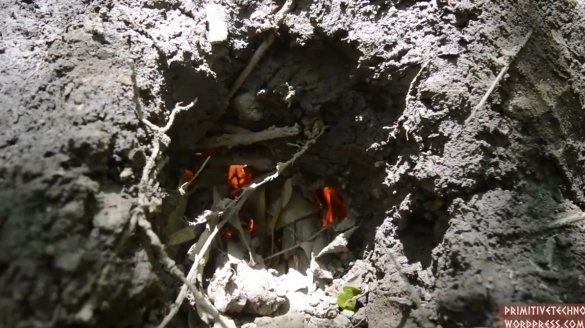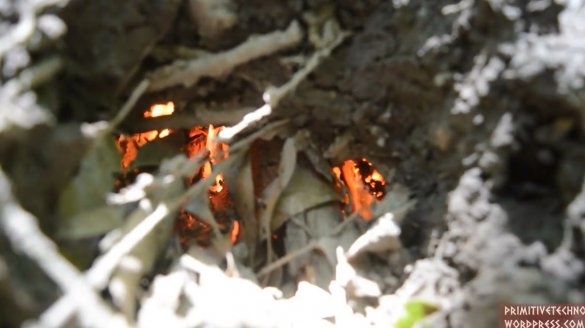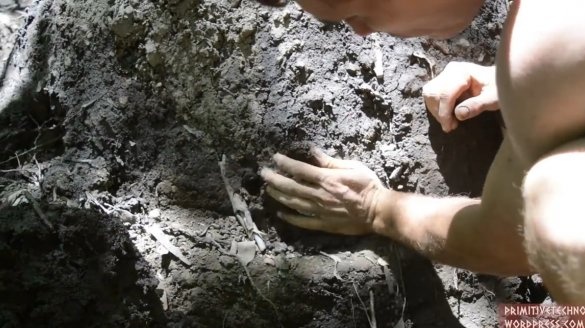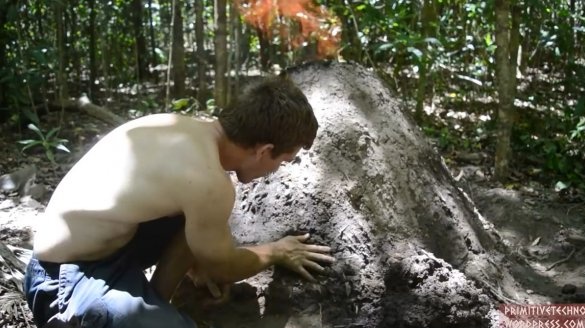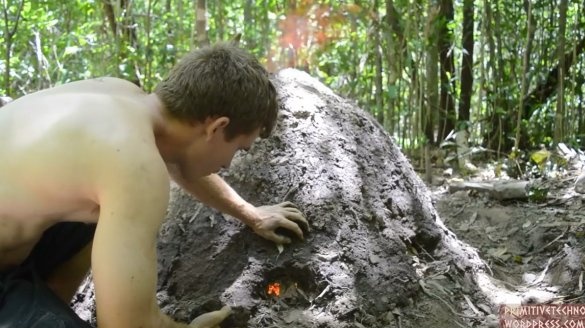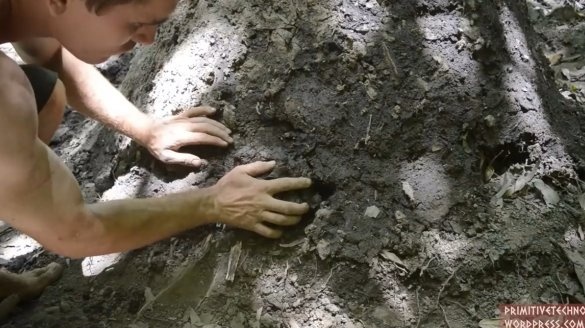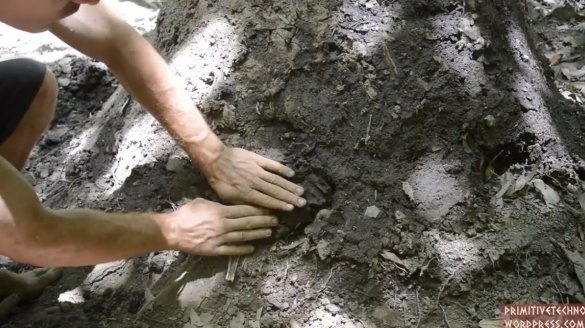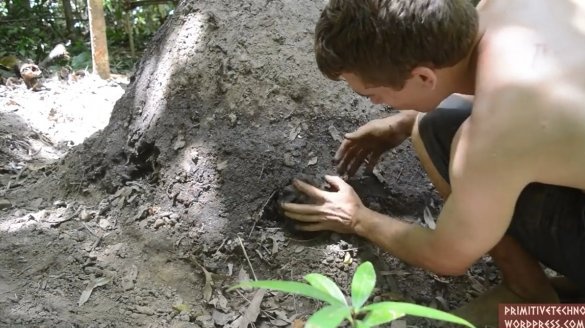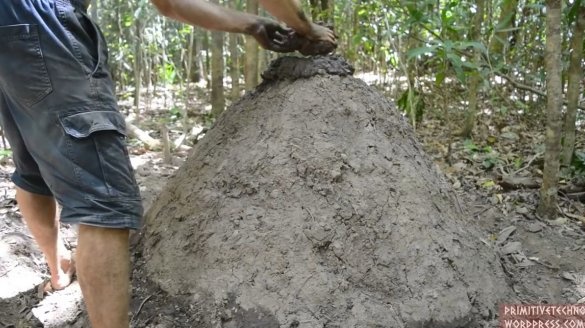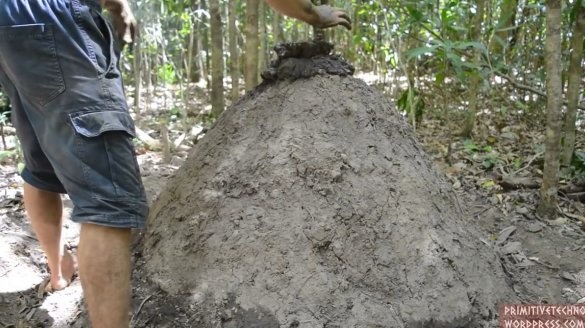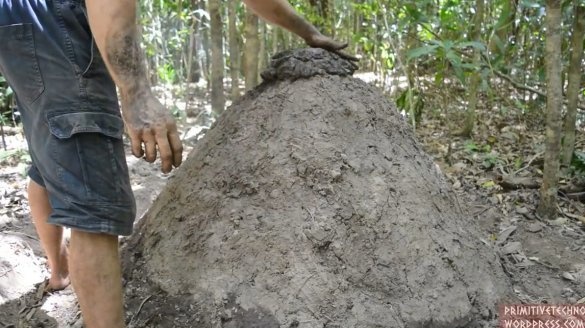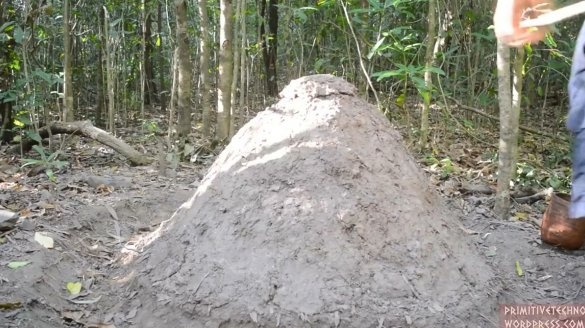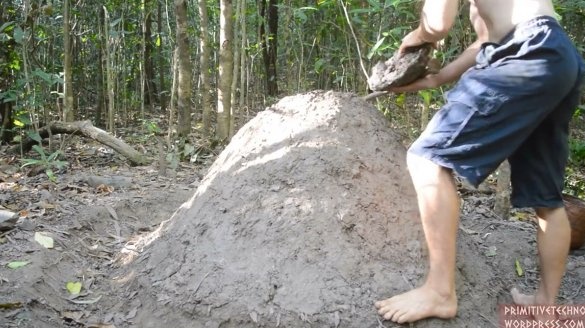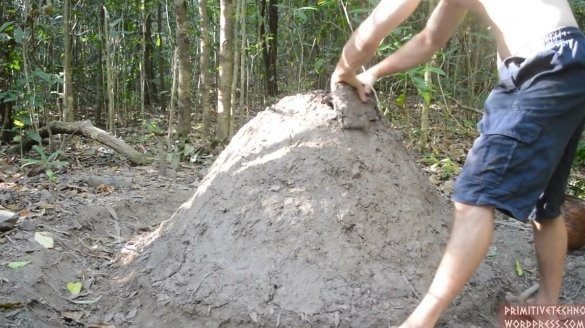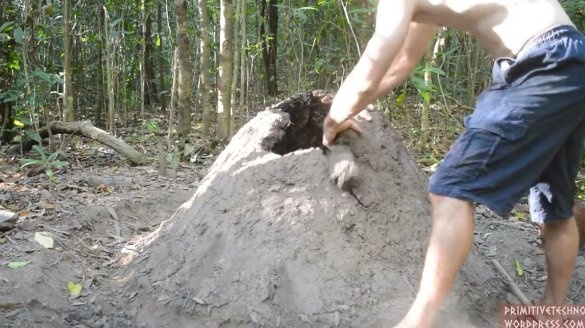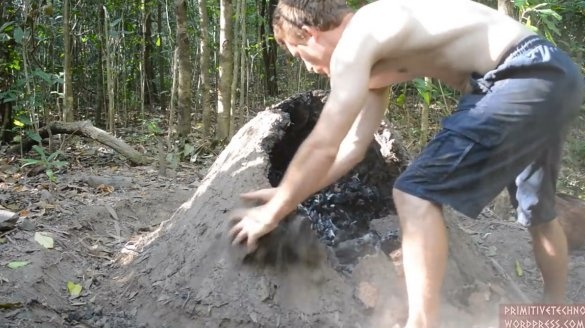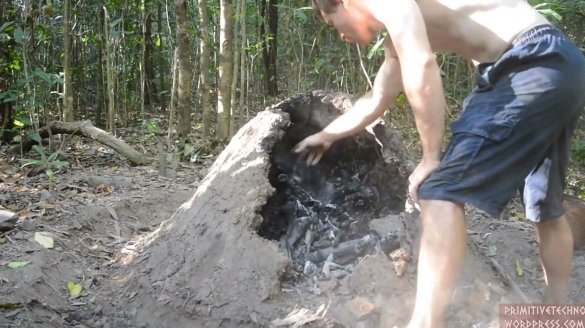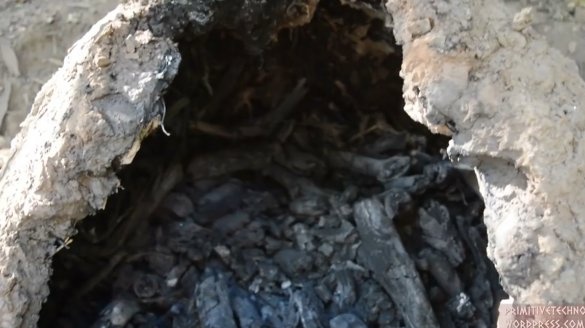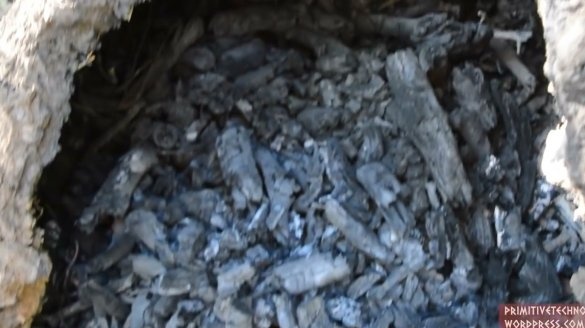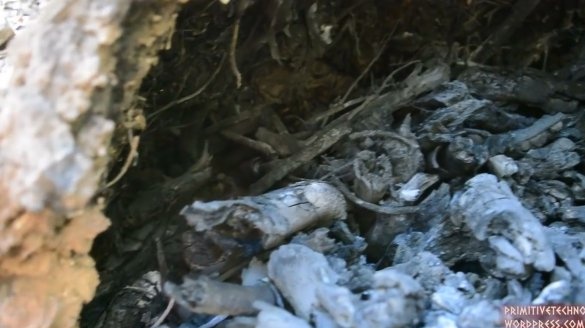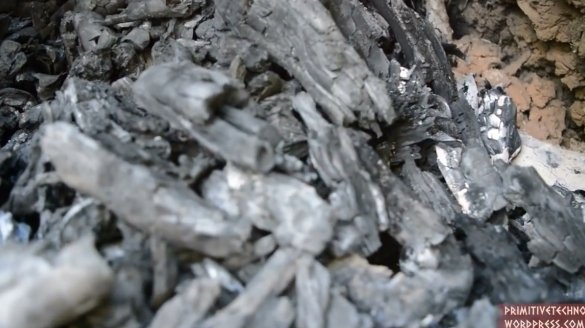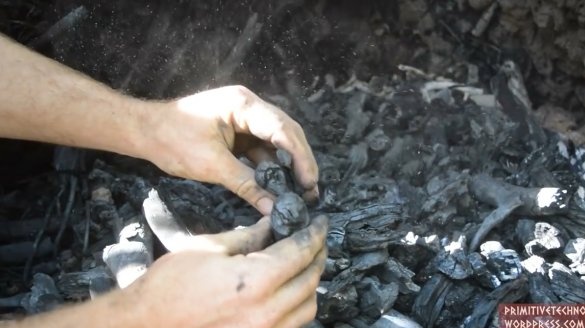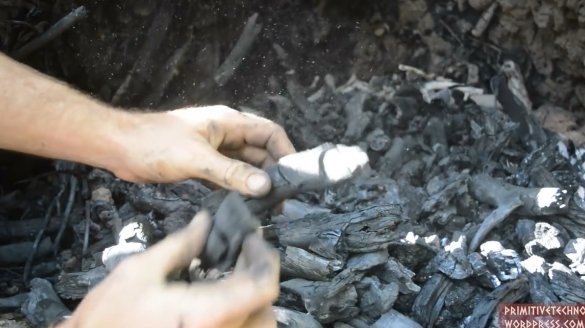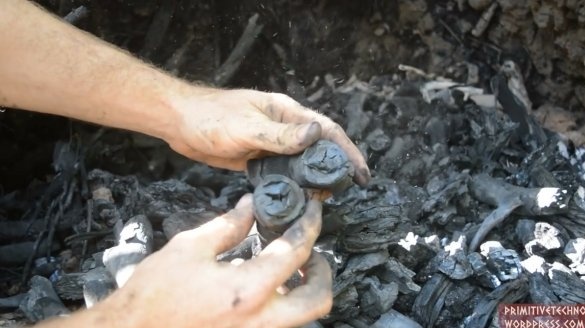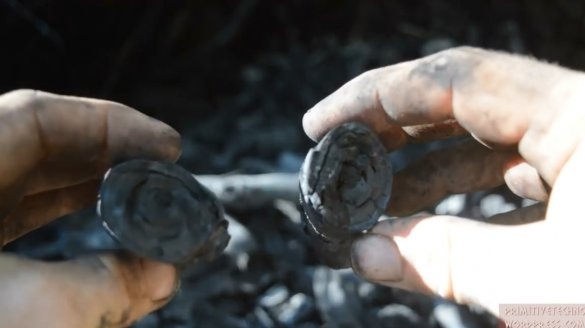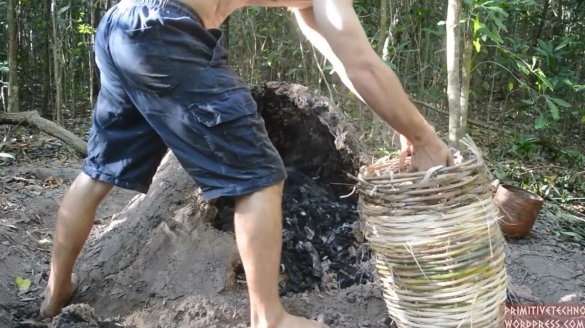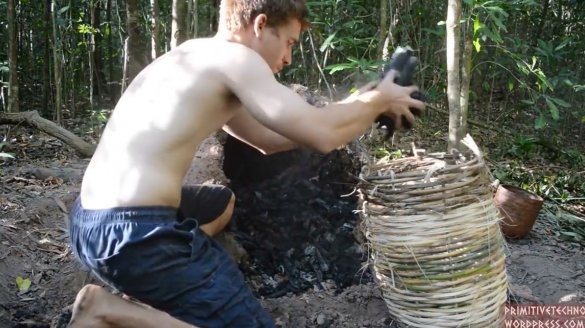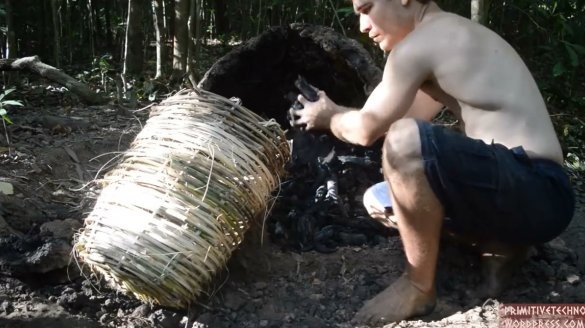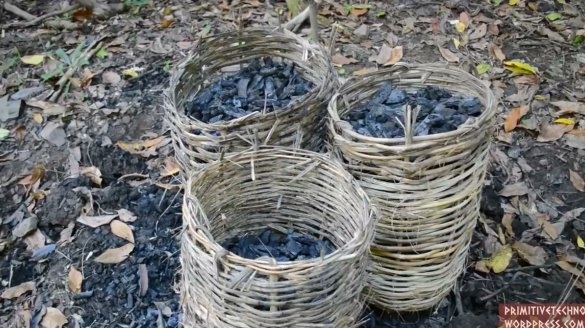In this article, the author of the YouTube channel "Primitive Technology" will tell you how he made a batch of charcoal using the bulk method, then transferred it to baskets for further storage.
Charcoal is a fuel that burns at a higher temperature than the wood from which it is made.
This is due to the fact that the initial stages of combustion, which consume energy, took place when coal displaced the volatile components of wood (such as water, juice, essential oils). The result is an almost pure carbon fuel that burns out at a much higher temperature, with virtually no smoke, and with a smaller flame. Charcoal was mainly fuel for metallurgy in ancient times, but was occasionally used for cooking.
Materials
- Dry logs and branches
- Dry branches with leaves
- clay soil
- Water.
Instruments, used by the author.
- stones
- A stick for ignition by friction.
Manufacturing process.
First, the master collects dry branches and tree trunks, then breaks relatively thin ones with stones, throwing them on a branch.
I had to tinker with thick trunks by making a groove, then breaking it with a stone.
It can also be broken manually by hitting a sawn log against a stone.
This is a bunch of logs and branches.
Now the author digs a small hole, and sets the largest log in it vertically. Then he drops it.
Then begins to trim the central log, starting with the thickest pieces of wood.
The closer to the outer layer - the smaller the branches are laid.
The penultimate layer forms from branches with leaves.
Now the author digs a hole, fills it with water and stirs the earth to a thick solution.
From the resulting solution forms a "coat" around the resulting hut. And it starts from the bottom.
In a dense layer, trying to prevent cracks, it lays the top of the fur coat, leaving a hole for the exit of smoke and gases on the top of the mound. The surface of the coat is slightly moistened with water, and smoothes.
Now, on all sides of the mound, it is making several holes in the lower part, this will be a kind of blow.
Kindle mound, falling asleep on top of a set fire.
Throws small branches on top, waiting for the external part to warm up.
Places where cracks appear necessarily covers up.
Since part of the branches begins to sag, you can throw more.
So the fire began to appear in the lower part of the stored fuel. Fire burned inside the embankment against the updraft. The master believes that this is the best way to make charcoal, since the rising flame consumed oxygen and does not allow the coal already produced above them to burn, displacing even more volatile substances.
At this stage, the author first closes all the blowing holes.
Then tightly closes the exhaust hole. About four hours passed from the moment of ignition to closing.
The next day, when the mound was cool to the touch (sometimes it can take about 2 days), the master opened the mound. It is important to check if the coal is smoldering inside.
Then he simply broke the outer walls.
The resulting charcoal was of good quality. A certain amount of wood near the entrances to the air burned to the ground, although these were only small twigs and leaves. For this reason, small branches are laid on the outside of the embankment so that it is burnt predominantly in front of the larger wood on the inside, thereby protecting large pieces of charcoal.
Charcoal was hard and shiny. At autopsy, he retained the beam structure of the tree. When moving his hand through it, charcoal seemed tinny, like seashells on the beach, driven by waves. These are signs of good quality. Bad coal is soft, breaks easily, and has a muffled sound.
Now the finished coal can be transferred to storage baskets.
The author intends to use charcoal to obtain higher temperatures in the furnace than he can achieve using only firewood. According to the author’s research, a natural draft furnace using wood can reach a maximum of 1,400 ° C, while a natural draft furnace using charcoal can reach 1,600 ° C. Obtaining high temperatures is necessary for changing the material in order to develop the following technology (for example, smelting ore into metal). That’s such a volume of coal.

